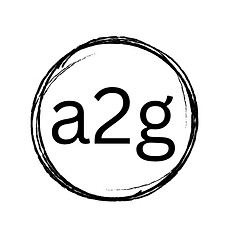

Colonel's Blog, Earthdate 26 Jan 2023...
Hey Y'all!
Happy Thursday from Air2Ground Farms!! This morning is a beautiful sunny sparkly cold winter morning. The wet slushy snow has turned into crunchy icy snow. The air is cold, but the sun is warm. The animals are all enjoying the sunshine. When we went down to feed the hogs, they were not in their shelter, but all were lying together in a spot of sunshine shining through the trees. Although the temperature was lower this morning, our efforts to keep the milking machine warm were successful and we were able to milk with it. Yesterday, we worked a bit with the dogs. Toezer is doing a great job and is learning to walk on a leash and does very well staying by our side without fuss. His demeanor changes and he gets the "I'm working here!" look on his face. We made a pound and a half of cheese, a pint of sour cream, and got a quart of cream ready to make cultured butter. Today we will refresh everyone's water and make a pork delivery. We partner with a local business whose model is to bring the Farmer's Market directly to your door. Through a commission, he markets and delivers farm-fresh products directly to the customers' door. We really enjoy working with the business and see it as an expanding market. The top pic is Shelley and I this morning enjoying the sunshine with cold watery eyes. The bottom pic is Stella checking out my phone with Betty overseeing in the background.
[I owe the majority of my understanding of cows' digestive magic to the guru of the family dairy, Joann S. Grohman and her awesome book Keeping a Family Cow.] Cows are amazing creatures. Well, all ruminant animals really, but today I will focus on cows. They have the amazing ability to convert things from which humans (actually all omnivores) get little to no nutritional value into something usable. Cows have four sections or chambers in their stomach. The largest chamber is the rumen and it is astonishing. The rumen is a fermentation vat full of microorganisms: bacteria and protozoa. The rumen is the first stop for everything a cow eats. Inside the rumen, the bacteria do something that no animal can do: they digest cellulose. Plants use cellulose to form the structures necessary to stand upright. The stiffer the plant, such as trees and grass, the more cellulose. Plants like lettuce have very little cellulose. Cows ingest cellulose, mostly in the form of grass, and the bacteria living in the rumen immediately begin to convert it into the basic building block of amino acids which form protein. The fermenting grass is then brought back up to the mouth where the cow now chews it. This action adds saliva and breaks down the cell walls, releasing carbohydrates, and activates a valve that opens a different chamber of the stomach. This new mixture is then swallowed and it moves through the other chambers finally ending in the true stomach (acts much like ours) as a high-protein diet. The cow then uses this high protein mixture to make muscle. A byproduct of the rumen bacteria is acetic acid, a short-chain fatty acid. Acetic acid is absorbed directly through the rumen wall and is the cows principal source of energy for all of its immediate needs, including milk production. So summing it all up, grass receives its energy from the sun, cows eat the grass, and convert it into something nutritional for humans. Like I said, amazing.
Local Farm Report:
Harvest:
24 Chicken eggs
2 Duck eggs
4 3/4 Gallons of milk
Sales:
N/A
Cheers!
Rich & Shelley

You seem to be enjoying yourself.Love y'all
I love these daily updates. They are great pick me ups. Cheers.
Todd